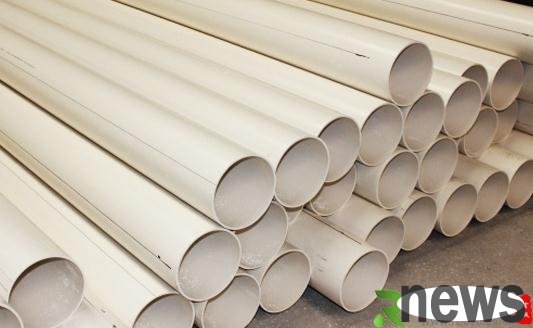What is UPVC pipe? UPVC pipe selection and purchase skills UPVC pipe introduction and function UPVC pipe is a plastic pipe material that uses polyvinyl chloride (PVC) resin as the raw material and does not contain plasticizer. With the development of...

UPVC pipe? UPVC pipe selection and purchase skills
UPVC pipe introduction and function
UPVC pipe is a plastic pipe material that uses polyvinyl chloride (PVC) resin as the raw material and does not contain plasticizer. With the development of chemical industry technology, non-toxic grade pipes can now be produced, so it has the properties of general polyvinyl chloride and has added some excellent properties. Specifically, it has the advantages of corrosion resistance and softness, so it is especially suitable for water supply pipe networks. Because it is not conductive, it is not easy to react electrochemically with acids, alkalis and salts. It is difficult for acids, alkalis and salts to corrode it, so there is no need for external anticorrosion coatings and inner linings. The good softness overcomes the shortcomings of plastic tube brittleness in the past, and can yield under load without rupture.
UPVC pipe selection skills
For the most common white UPVC drain pipes, the color is milky white and uniform, the inner and outer walls are relatively smooth but a bit east. The second-hand UPVC drain pipes are not snow-white, and some are yellow and hard. Some are uneven in color, some are particularly smooth in outer walls, while the inner walls appear rough, and sometimes have needles or small holes. The toughness of
UPVC drain pipes is a very critical indicator. When we saw the pipe into narrow strips, try to fold it by 180° if it breaks once, it means it is very tough and has great brittleness; if it is difficult to break, it means it is tough, and the more effort it takes to break it during folding, the strength is very good, and the toughness is generally good. Finally, you can observe the broken stubble (except for the saw stubble). The more delicate the stubble, the better the homogenization, strength and toughness of the pipe. The impact resistance of
UPVC drainage pipes can also be used to make a macro-level general judgment in simple ways. You can choose an environment with a room temperature of close to 20℃, and saw it into a 200mm long pipe section (for 110mm pipes), and hit it with a hammer. It is difficult to break a good pipe with manpower at one time. (The thicker the tube, the greater the bearing capacity).
Users with conditions can make the pipe into a dumbbell shape, with a width of 6mm at a narrow parallel position, and a tensile strength of 5mm/min. It is qualified if it is greater than 10MPa. The longer the stretch, the better the pipe.
When users choose UPVC drain pipes, they should go to a reputable distribution point to choose products from large and well-known companies, or go to a direct sales point of well-known brands to buy them. After our preliminary investigation, the pass rate of miscellaneous UPVC pipes sold at small roadside distribution points is less than 20%.
UPVC pipe cleaning and maintenance
1. The UPVC pipe should be concealed with pressure, and generally the working pressure should be used as the pressure holding pressure. The pressure can only be withdrawn after the concealed layer reaches the permitted strength.
2. Since the UPVC pipe has a soft texture and its mechanical strength is not as high as that of steel pipes, physical damage must be strictly prevented. After installation, the pipeline is strictly prohibited from being knocked, bumped, smashed, or pressed. Cover protection measures should be taken before concealing. Pipes located in the pipeline well should be taken to prevent bricks, debris, etc. from falling off and breaking the pipeline. Because the components of UPVC pipes should be prevented from chemical damage, which is very easy to ignore during construction. When installed outdoors or in direct sunlight, a deep-colored protective layer should be bandaged to prevent sunlight from causing chemical damage to the pipeline.
3. During the low temperature in winter, if there are no good insulation measures, the water in the UPVC pipe should be blown away in time to prevent the pipe from freezing.
4. After the concealment is completed, be sure to make a mark to prevent other construction from destroying the pipeline.